
Soavita: The Serene Gem of Majunga
Discover the tranquil charm of Soavita in Majunga, Madagascar, where serene landscapes meet vibrant local culture and delicious cuisine.
Soavita in Majunga is a tranquil neighbourhood that offers an authentic slice of Malagasy life. Known for its peaceful atmosphere, Soavita is the perfect place to unwind and explore the natural beauty of Madagascar. The area is lined with charming local markets, where you can find vibrant textiles, handcrafted souvenirs, and fresh produce. The warm and friendly locals add to the neighbourhood's inviting charm. For nature enthusiasts, Soavita offers easy access to several scenic spots. A short drive will take you to the stunning beaches of Majunga, where you can enjoy the sun, sand, and sea. The neighbourhood is also home to lush green parks and gardens, ideal for a relaxing afternoon stroll. Bird watchers will be delighted by the variety of exotic birds that can be spotted in the area. Food lovers will find Soavita a gastronomic delight. The neighbourhood is dotted with quaint eateries offering delicious Malagasy cuisine. From mouth-watering seafood dishes to local street food, there’s something to satisfy every palate. Don’t miss out on trying the famous zebu steak, a local speciality that's sure to leave a lasting impression.
Local tips in Soavita
- Visit early in the morning to experience the local markets at their liveliest.
- Carry cash, as many local vendors may not accept credit cards.
- Hire a local guide for a more insightful exploration of the neighbourhood.
- Don't forget to try the local zebu steak at one of the neighbourhood eateries.
- Bring a good pair of walking shoes for exploring the parks and markets.
Soavita: The Serene Gem of Majunga
Soavita in Majunga is a tranquil neighbourhood that offers an authentic slice of Malagasy life. Known for its peaceful atmosphere, Soavita is the perfect place to unwind and explore the natural beauty of Madagascar. The area is lined with charming local markets, where you can find vibrant textiles, handcrafted souvenirs, and fresh produce. The warm and friendly locals add to the neighbourhood's inviting charm. For nature enthusiasts, Soavita offers easy access to several scenic spots. A short drive will take you to the stunning beaches of Majunga, where you can enjoy the sun, sand, and sea. The neighbourhood is also home to lush green parks and gardens, ideal for a relaxing afternoon stroll. Bird watchers will be delighted by the variety of exotic birds that can be spotted in the area. Food lovers will find Soavita a gastronomic delight. The neighbourhood is dotted with quaint eateries offering delicious Malagasy cuisine. From mouth-watering seafood dishes to local street food, there’s something to satisfy every palate. Don’t miss out on trying the famous zebu steak, a local speciality that's sure to leave a lasting impression.
Iconic landmarks you can’t miss
Le Baobab de Majunga
Experience the enchanting beauty of Le Baobab de Majunga, a natural marvel that showcases Madagascar's iconic baobab trees in a serene setting.
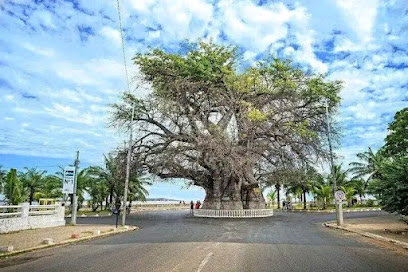
CIRQUE ROUGE
Discover the stunning Cirque Rouge, a national reserve near Mahajanga, with its striking red cliffs and lush landscapes perfect for adventure and relaxation.

Zahamotel
Discover the charm of Mahajanga while enjoying a cozy stay at Zahamotel, your home away from home in Madagascar.

Village Touristique
Explore the vibrant culture and stunning landscapes of Village Touristique in Mahajanga, Madagascar, where adventure and relaxation await.

Amborovy Airport
Explore Madagascar's coastal wonders starting at Amborovy Airport in Mahajanga, your gateway to adventure and cultural experiences.

Petite Plage, Majunga
Discover the vibrant culinary scene of Mahajanga at Petite Plage, where fresh seafood meets stunning coastal views in a charming atmosphere.
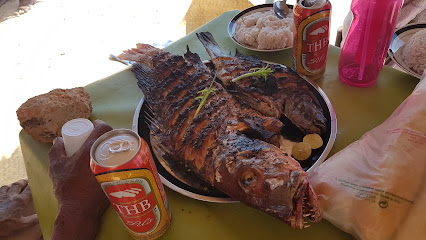
AQUALAND PARK MAHAJANGA
Experience the thrill of water slides, lazy rivers, and family fun at Aqualand Park Mahajanga, Madagascar's premier water park for all ages.

Ampazôny Oasis Lodge
Discover the tranquil charm of Ampazôny Oasis Lodge in Mahajanga, where comfort meets nature in the heart of Madagascar.

Ecolodge De La Grotte D'Anjohibe
Experience authentic eco-tourism at Ecolodge De La Grotte D'Anjohibe, a serene escape in Madagascar's lush landscapes near stunning caves and waterfalls.
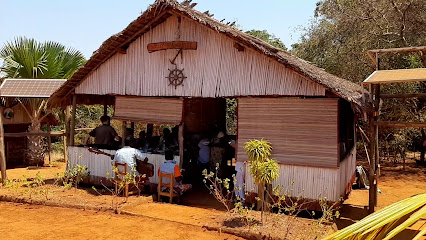
Grottes de Belobaka
Discover the stunning Grottes de Belobaka, a unique limestone cave system near Mahajanga, where nature's beauty meets geological wonder.

Phare de katsepy
Explore the historic Phare de Katsepy, a stunning lighthouse in Mahajanga, Madagascar, offering breathtaking views and a glimpse into maritime history.

Maskita Bord Majunga
Discover the authentic flavors of Madagascar at Maskita Bord Majunga, a barbecue restaurant in Mahajanga offering succulent dishes in a vibrant atmosphere.

Ampazony Lodge
Experience the serene beauty of Ampazony Lodge in Mahajanga, Madagascar, where comfort meets the wonders of nature.

Tsutsumani Alexandra
Experience the tranquil lifestyle of Tsutsumani Alexandra, a serene retirement home in Mahajanga, Madagascar, perfect for relaxation and cultural immersion.

Unmissable attractions to see
Le Baobab de Majunga
Explore the majestic Le Baobab de Majunga, a natural wonder in Madagascar offering unique experiences and breathtaking landscapes.

CIRQUE ROUGE
Discover the vibrant landscapes and unique geological formations of Cirque Rouge, a breathtaking national reserve in Mahajanga, Madagascar.

Village Touristique
Explore the vibrant Village Touristique in Mahajanga, a cultural gem of Madagascar offering stunning beaches and rich local traditions.

Essential places to dine
Le guest
Experience the vibrant flavors of Madagascar at Le Guest - Mahajanga's top spot for delicious pizza and refreshing drinks by the sea.

La petite cour
Experience the rich flavors of Madagascar at La Petite Cour - a culinary haven in Mahajanga offering delightful local and international dishes.

La Rotonde
Discover authentic Malagasy flavors and delightful international dishes at La Rotonde in Mahajanga.

AQUARhum
Experience authentic Italian pizza in Mahajanga at AQUARhum – where local flavors meet culinary excellence.
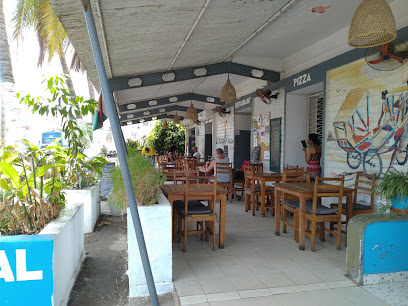
Restaurant Gourmand Coco Lodge Majunga
Discover culinary excellence at Restaurant Gourmand Coco Lodge Majunga—where local flavors meet exceptional dining experiences.

Coco loko
Experience the vibrant flavors of Madagascar at Coco Loko, where fast food meets local culinary delights in the heart of Mahajanga.

Lakana Manga
Experience authentic Malagasy cuisine at Lakana Manga in Mahajanga - where every meal tells a story.

La Botega du Tobany
Discover the authentic taste of Madagascar at La Botega du Tobany – where local flavors meet delightful dining.

Tsaradia Restaurant
Discover authentic Malagasy cuisine at Tsaradia Restaurant, a family-friendly gem located just minutes from Mahajanga's airport.

Maskita Bord Majunga
Experience the authentic flavors of Madagascar at Maskita Bord Majunga - a barbecue haven in Mahajanga offering delightful grilled dishes.

Markets, malls and hidden boutiques
Score Majunga
Explore the vibrant offerings of Score Majunga, a one-stop supermarket in Mahajanga for local flavors and international products.

CIRQUE ROUGE
Explore the breathtaking Cirque Rouge in Mahajanga, a national reserve showcasing stunning red rock formations and rich biodiversity.

Shoprite Majunga
Explore the vibrant flavors of Mahajanga at Shoprite Majunga – your go-to supermarket for fresh produce, baked goods, and local delicacies.

AQUALAND PARK MAHAJANGA
Experience the thrill and excitement of Aqualand Park Mahajanga, Madagascar's premier water park with slides, pools, and family fun.

bijouterie BALARA à Majunga
Explore Bijouterie BALARA in Mahajanga for exquisite handcrafted jewelry reflecting Madagascar's rich cultural heritage.

Quincaillerie Soa
Explore Quincaillerie Soa in Mahajanga, Madagascar, a unique iron ware dealer showcasing local craftsmanship and traditional artistry.

NASSIMI-STORE
Discover quality auto parts and expert service at Nassimi Store in Mahajanga, the ideal stop for travelers and locals alike.

Marché de Marolaka
Experience the vibrant atmosphere and local culture at Marché de Marolaka, a must-visit market in Mahajanga, Madagascar.

Fun Boutik Majunga
Discover unique Malagasy fashion at Fun Boutik Majunga, where local craftsmanship meets contemporary style in the heart of Mahajanga.
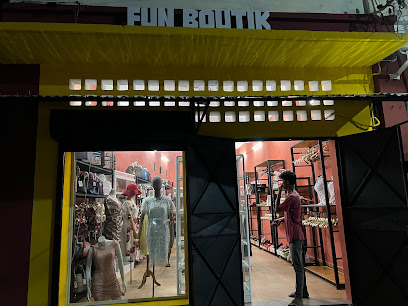
Quincaillerie Maimoon
Explore Quincaillerie Maimoon in Mahajanga for unique local crafts and tools, a true reflection of Madagascar's rich craftsmanship.

Essential bars & hidden hideouts
Hôtel Restaurant Gourmand Coco Lodge Majunga
Experience the serene beauty and culinary delights at Hôtel Restaurant Gourmand Coco Lodge in Mahajanga, Madagascar.
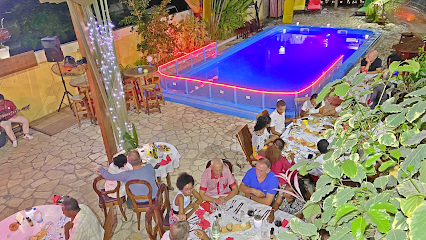
Le guest
Experience the vibrant dining culture of Mahajanga at Le Guest, where delicious pizzas meet stunning coastal views.

La petite cour
Discover the flavors of Madagascar at La Petite Cour, Mahajanga's premier dining destination offering a unique blend of local cuisine and warm hospitality.
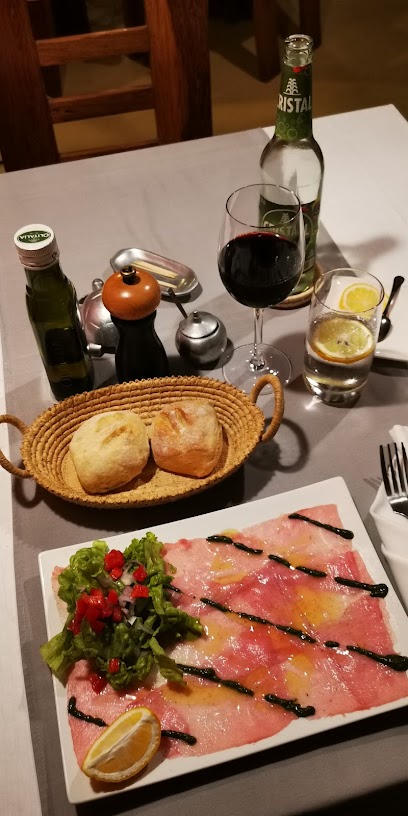
Petite Plage, Majunga
Experience the best of Madagascar's coastal dining at Petite Plage, where stunning views meet exquisite flavors.
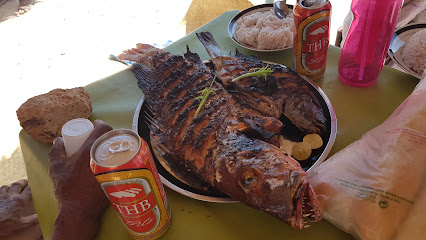
AQUARhum
Discover the vibrant flavors of AQUARhum in Mahajanga, where every pizza is a delicious journey of taste and freshness.
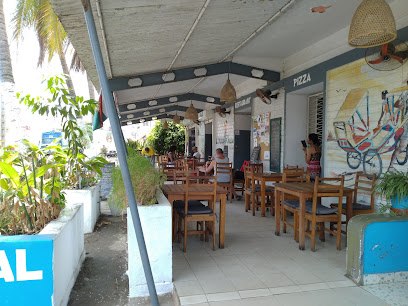
CLUB 73
Dive into the vibrant nightlife of Mahajanga at CLUB 73, where music, dance, and unforgettable experiences await in a stylish disco atmosphere.

Le Bon Alibi
Experience the vibrant nightlife of Mahajanga at Le Bon Alibi, where refreshing drinks and local culture come together in a lively bar atmosphere.
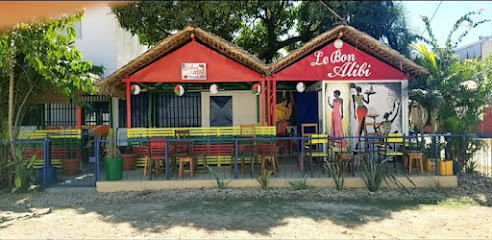
Maskita Bord Majunga
Experience the vibrant flavors of Mahajanga at Maskita Bord Majunga, renowned for its delicious barbecue and lively atmosphere.

BAR LE CAPITAL
Experience the lively nightlife and local culture at Bar Le Capital, a must-visit bar in Mahajanga, Madagascar.

BAR CARREAUX AMBALAVOLA MAJUNGA
Discover the local charm of Bar Carreaux Ambalavola in Mahajanga—a perfect spot for a relaxing drink and mingling with locals.

Local Phrases
-
- HelloSalama
[sah-lah-mah] - GoodbyeVeloma
[veh-loh-mah] - YesEny
[eh-ny] - NoTsia
[tsyah] - Please/You're welcomeAzafady
[ah-zah-fah-dy] - Thank youMisaotra
[mee-sah-oh-trah] - Excuse me/SorryAzafady
[ah-zah-fah-dy] - How are you?Inona ny vaovao?
[ee-noh-nah nee vah-oh-vah-oh] - Fine. And you?Tsara. Ary ianao?
[tsah-rah. ah-ree ee-ah-nah-oh] - Do you speak English?Miteny Anglisy ve ianao?
[mee-teh-ny ahng-lee-see veh ee-ah-nah-oh] - I don't understandTsy nifarana aho
[tsih nee-fah-rah-nah ah-hoo]
- HelloSalama
-
- I'd like to see the menu, pleaseTe-hah-tsaho ny menio, azafady
[teh-hah-tsah-hoo nee meh-nee-oh, ah-zah-fah-dy] - I don't eat meatTsy misy hena aho
[tsih mee-see heh-nah ah-hoo] - Cheers!Mazotoa!
[mah-zoh-toh-ah] - I would like to pay, pleaseTe-hah-vola, azafady
[teh-hah-voh-lah, ah-zah-fah-dy]
- I'd like to see the menu, pleaseTe-hah-tsaho ny menio, azafady
-
- Help!Fanantenana!
[fah-nah-teh-nah-nah] - Go away!Mivoaha!
[mee-voh-ah-ah] - Call the Police!Mangataka ny polisy!
[mahng-ah-tah-kah nee poh-lee-see] - Call a doctor!Mangataka dokotera!
[mahng-ah-tah-kah doh-koh-teh-rah] - I'm lostMipetraha aho
[mee-peh-trah-hah ah-hoo] - I'm illMiasa
[mee-ah-sah]
- Help!Fanantenana!
-
- I'd like to buy...Te-hah-haingo...
[teh-hah-hai-n-goh] - I'm just lookingManao fahatsiarovana fotsiny aho
[mah-nah-oh fah-haht-see-ah-roh-vah-nah foh-tseen-ee ah-hoo] - How much is it?Ohatra no vola azy?
[oh-hah-trah noh voh-lah ah-zee] - That's too expensiveMahafinaritra lavitra ny vola izany
[mah-hah-fee-nah-ree-trah lah-vee-trah nee voh-lah ee-zahn] - Can you lower the price?Aza manaiky ny vidin'ny vola?
[ah-zah mah-nah-ee-kee nee vee-deen-nee voh-lah]
- I'd like to buy...Te-hah-haingo...
-
- What time is it?Inona no ora izany?
[ee-noh-nah noh oh-rah ee-zahn] - It's one o'clockIsan'ny iray ora
[ee-sahn-nee ee-rah-ee oh-rah] - Half past (10)Sarona (folo)
[sah-roh-nah (foh-loh)] - MorningMaraina
[mah-rah-ee-nah] - AfternoonAloha
[ah-loh-hah] - EveningHariva
[hah-ree-vah] - YesterdayOmaly
[oh-mah-ly] - TodayAnio
[ahn-yoh] - TomorrowAndroany
[ahn-droh-ah-ny] - 1Iray
[ee-rah-ee] - 2Roa
[roh-ah] - 3Telo
[teh-loh] - 4Efatra
[eh-fah-trah] - 5Dimy
[dee-mee] - 6Enina
[eh-nee-nah] - 7Fitu
[fee-too] - 8Valo
[vah-loh] - 9Sivy
[see-vy] - 10Folo
[foh-loh]
- What time is it?Inona no ora izany?
-
- Where's a/the...?Aiza ny...
[ah-ee-zah nee] - What's the address?Inona ny adiresy?
[ee-noh-nah nee ah-dee-reh-see] - Can you show me (on the map)?Aza manome an'i (amin'ny sarita)?
[ah-zah mah-noh-meh ah-nee (ah-meen-nee sah-ree-tah)] - When's the next (bus)?Aiza ny farany (bus)?
[ah-ee-zah nee fah-rah-nee (boos)] - A ticket (to ....)Fifidianana (any ...)
[fee-fee-dyah-nah (ahn-y ...)]
- Where's a/the...?Aiza ny...
History of Soavita
-
Soavita, located in Majunga, has roots that trace back to the early settlements in Madagascar. This area was predominantly inhabited by the Sakalava people, who established a rich cultural tapestry that blended local traditions with influences from trade interactions with Arab and European settlers. The name 'Soavita' itself is believed to derive from local dialects, reflecting the region's linguistic diversity.
-
During the late 19th century, Majunga became a focal point for French colonial expansion in Madagascar. Soavita, being part of this burgeoning town, witnessed significant changes as the French established port facilities and infrastructure. This led to an influx of migrants and a blend of cultures, with the introduction of new agricultural practices, particularly in the cultivation of vanilla and cloves.
-
The strategic location of Majunga, including Soavita, gained prominence during World War II. The area served as a base for Allied forces due to its port facilities. This period saw an increase in military presence and infrastructure development, which had lasting impacts on the local economy and demographics as returning soldiers settled in the area after the war.
-
Following Madagascar's independence in 1960, Soavita experienced a cultural revival as local communities sought to reclaim and celebrate their heritage. Traditional practices in music, dance, and crafts were revitalized, and the area became known for its vibrant cultural festivals that attracted both locals and tourists, showcasing the unique Sakalava identity.
-
In recent decades, Soavita has faced various challenges, including urbanization and environmental issues. However, the community has shown resilience through grassroots initiatives aimed at preserving cultural heritage and promoting sustainable practices. Local artisans and craftspeople continue to thrive, ensuring that Soavita remains a vibrant part of Majunga’s cultural landscape.
Soavita Essentials
-
Soavita is accessible from other neighborhoods in Majunga via local taxis and buses. The main bus station in Majunga serves as a starting point for routes heading towards Soavita. Taxis are also available, and negotiating the fare beforehand is recommended. If you're coming from the airport, a taxi ride will take approximately 20-30 minutes, depending on traffic.
-
Soavita is best explored on foot or by bicycle, as many attractions are within walking distance. Local taxis are available for longer trips, and they can be flagged down easily. Buses also run through the neighborhood, connecting Soavita to other parts of Majunga. Renting a bicycle can provide a more immersive experience, allowing travelers to navigate the area at their own pace.
-
Soavita is generally safe for tourists, but it is important to stay vigilant. Avoid wandering alone at night, particularly in poorly lit areas. Specific areas near the beach may have higher crime rates, so exercise caution and keep valuables out of sight. Always be aware of your surroundings, especially in crowded places.
-
In case of an emergency, dial 117 for police assistance or 118 for medical emergencies. There are local clinics and hospitals in Majunga that can provide medical care. It is advisable to carry a copy of your travel insurance details and the contact information of your country's embassy in Madagascar.
-
Fashion: Do dress conservatively, especially when visiting local markets or religious sites. Avoid wearing revealing clothing. Religion: Do respect local customs and traditions; be mindful of the local culture. Public Transport: Do offer your seat to elderly passengers; don't eat or drink on public transport. Greetings: Do greet people with a smile and a handshake; don't use overly familiar gestures. Eating & Drinking: Do try local dishes and accept food offers; don't refuse hospitality as it may be considered rude.
-
To experience Soavita like a local, visit the bustling markets where you can sample fresh seafood and local delicacies. Engage with vendors, as they are often friendly and eager to share their culinary secrets. Attend local events or festivals if your visit coincides with one, as they provide a glimpse into the vibrant culture of Soavita. Exploring the coastal area during sunset offers stunning views and a chance to mingle with locals enjoying the evening breeze.
Trending Landmarks in Soavita
Nearby Cities to Soavita
-
Things To Do in Majunga
-
Things To Do in Chirongui
-
Things To Do in Bandrele
-
Things To Do in Nosy Be
-
Things To Do in Dembeni
-
Things To Do in Sada
-
Things To Do in Chiconi
-
Things To Do in Mamoudzou
-
Things To Do in Koungou
-
Things To Do in Acoua
-
Things To Do in Antananarivo
-
Things To Do in Andasibe
-
Things To Do in Toamasina
-
Things To Do in Domoni
-
Things To Do in Ouani









